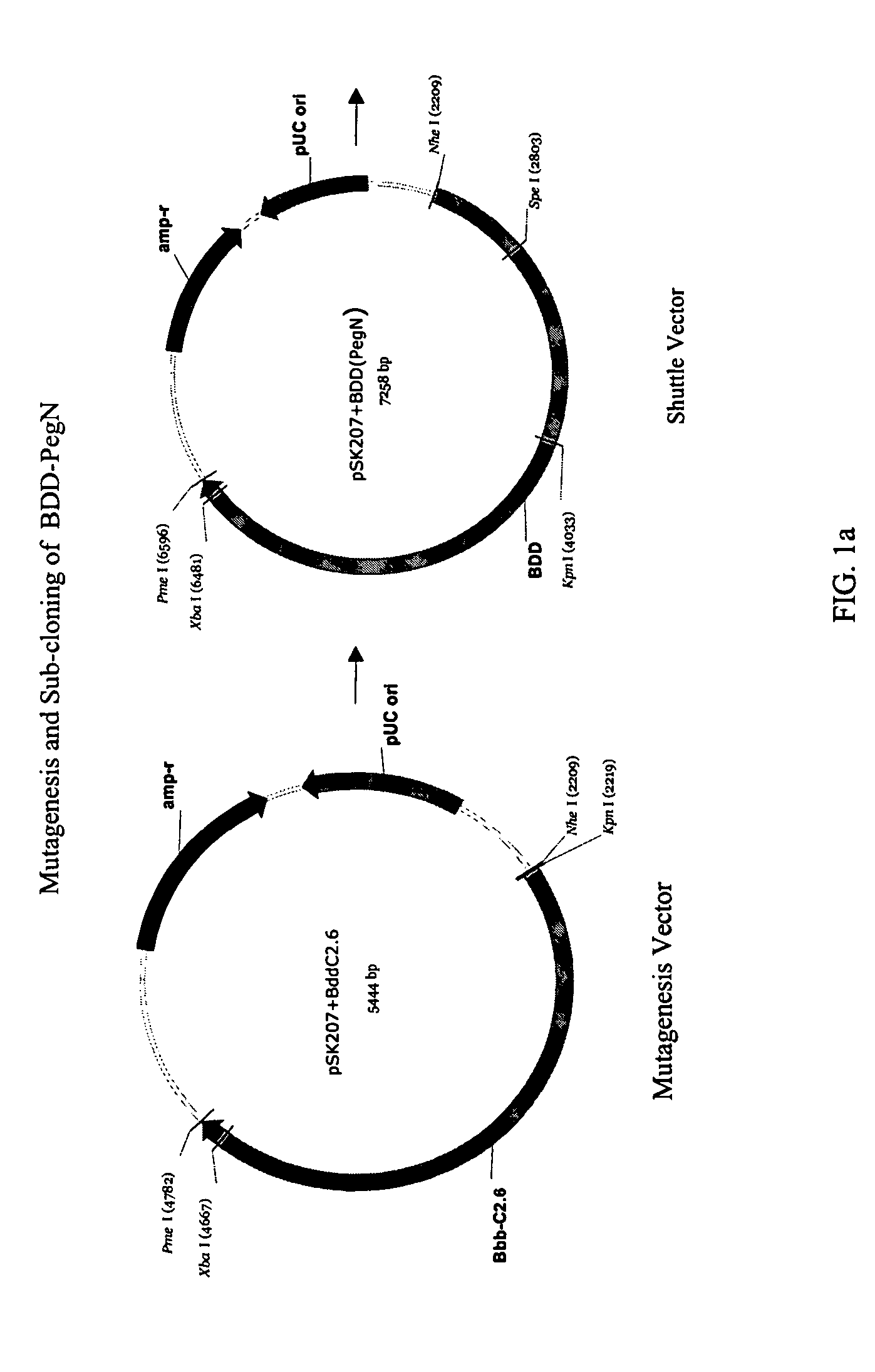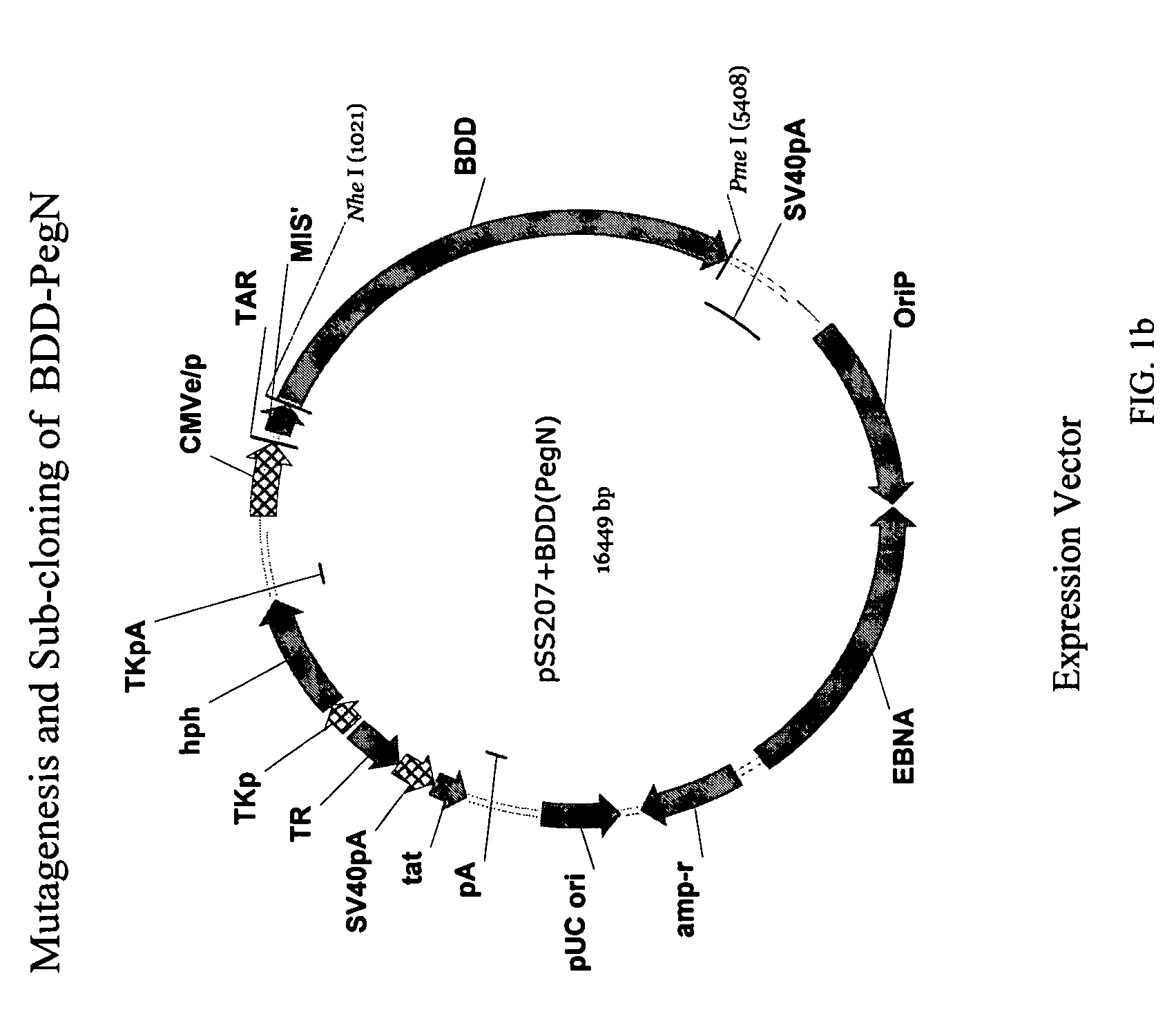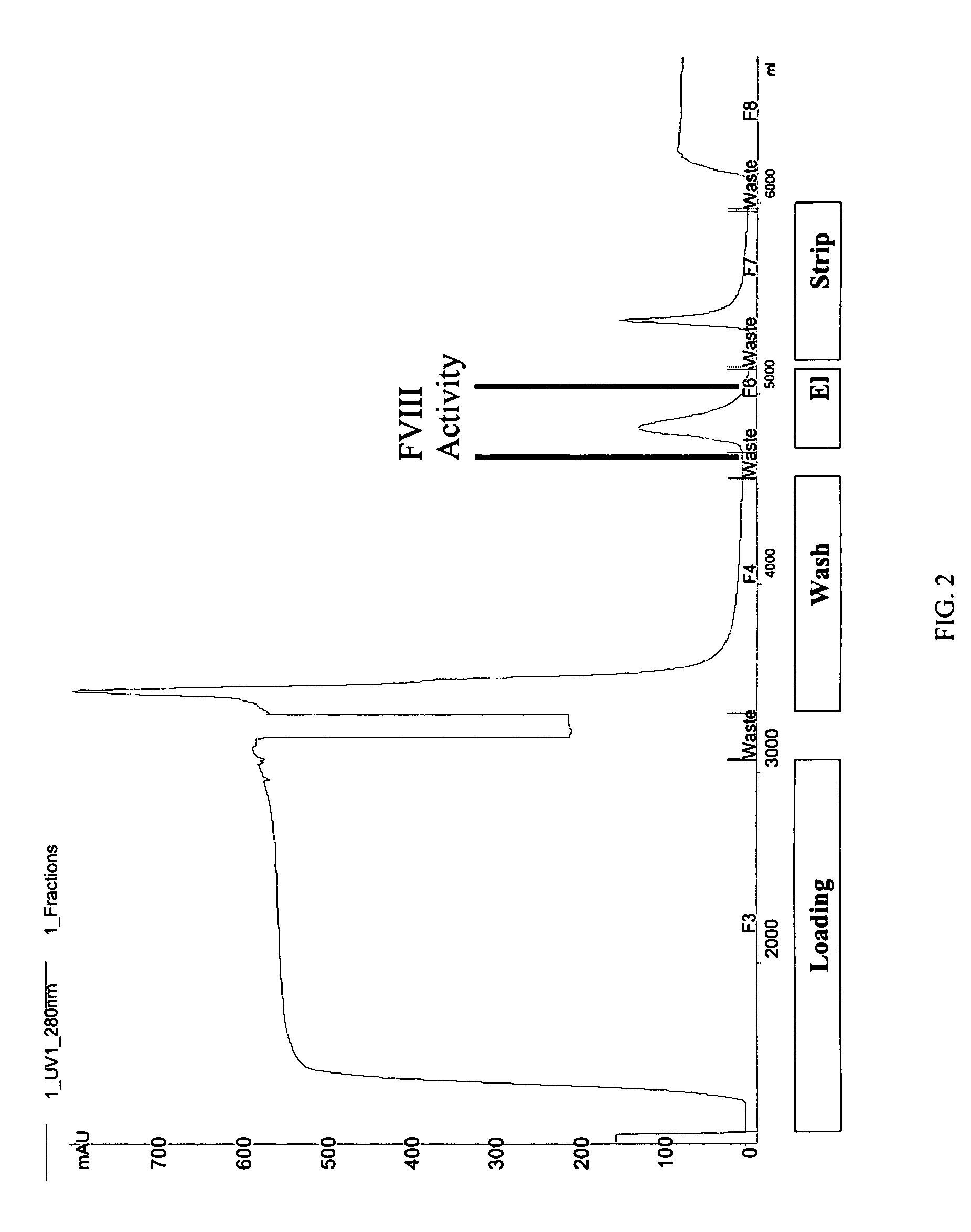Site-directed modification of FVIII
a site-directed modification and mutein technology, applied in the field of fviii muteins, can solve the problems of affecting the compliance of patients, affecting the treatment effect of patients, so as to improve the pharmacokinetic characteristics and therapeutic characteristics
- Summary
- Abstract
- Description
- Claims
- Application Information
AI Technical Summary
Benefits of technology
Problems solved by technology
Method used
Image
Examples
examples
[0099]STRUCTURE ACTIVITY RELATIONSHIP ANALYSIS OF FVIII. FVIII and BDD FVIII are very large complex molecules with many different sites involved in biological reactions. Previous attempts to covalently modify them to improve pharmacokinetic properties had mixed results. That the molecules could be specifically mutated and then a polymer added in a site-specific manner was surprising. Furthermore, the results of improved pharmacokinetic properties and retained activity were surprising also, given the problems with past polymeric conjugates causing nonspecific addition and reduced activity.
[0100]In one embodiment, the invention concerns site-directed mutagenesis using cysteine-specific ligands such as PEG-maleimide. A non-mutated BDD does not have any available cysteines to react with a PEG-maleimide, so only the mutated cysteine position will be the site of PEGylation. More specifically, BDD FVIII has 19 cysteines, 16 of which form disulfides and the other 3 of which are free cystein...
PUM
| Property | Measurement | Unit |
|---|---|---|
| size | aaaaa | aaaaa |
| size- | aaaaa | aaaaa |
| radius | aaaaa | aaaaa |
Abstract
Description
Claims
Application Information
 Login to View More
Login to View More - R&D
- Intellectual Property
- Life Sciences
- Materials
- Tech Scout
- Unparalleled Data Quality
- Higher Quality Content
- 60% Fewer Hallucinations
Browse by: Latest US Patents, China's latest patents, Technical Efficacy Thesaurus, Application Domain, Technology Topic, Popular Technical Reports.
© 2025 PatSnap. All rights reserved.Legal|Privacy policy|Modern Slavery Act Transparency Statement|Sitemap|About US| Contact US: help@patsnap.com



